Realtime clock battery
TinyRTC background
Way back when I started adding realtime clocks to pcbs (which was the octoscrolla with RTC) I made the decision to use the TinyRTC DS1307 clock module which could be sourced from China as a complete module cheaper than the price of all the parts that went into it. There was a couple of things to be aware of though. This module came with pullup resistors for the I2C bus which Beaglebone Black’s, Beaglebone Green’s and Raspberry Pi’s use to communicate with the clock IC. This meant that they needed to be removed as the Beagles and Pis had internal ones. I also chose to specify that the board used the non rechargeable and much easier to source CR2032 rather than the rechargeable LIR2032. In order to use the non rechargeable CR2032 the charging circuit needed to be disabled which meant that the diode D1 had to be removed from the pcb.
TinyRTC modifications
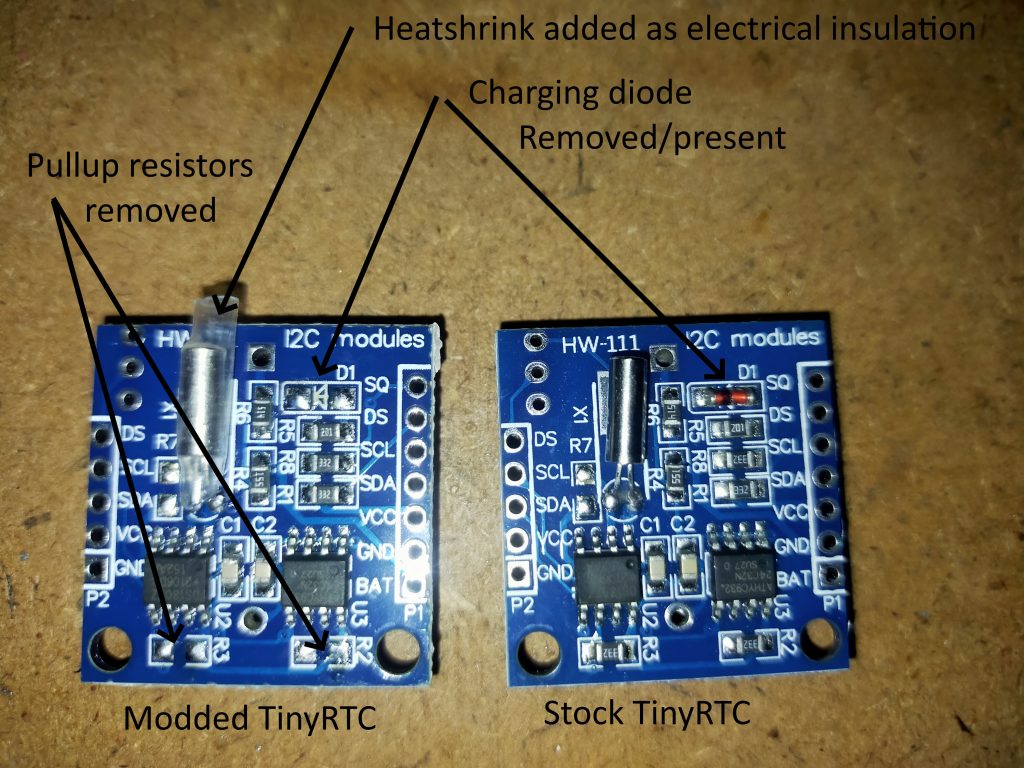
THAT diode

The highlighted component is D1 the diode that is in the charging circuit. It is the only red/orange component on the board and on most Hanson Electronics boards using the RTC it is possible to see if the diode is in place or not if you look along the TinyRTC from the end where the crystal (which I usually cover in heatshrink) is.
Boards showing the diode location
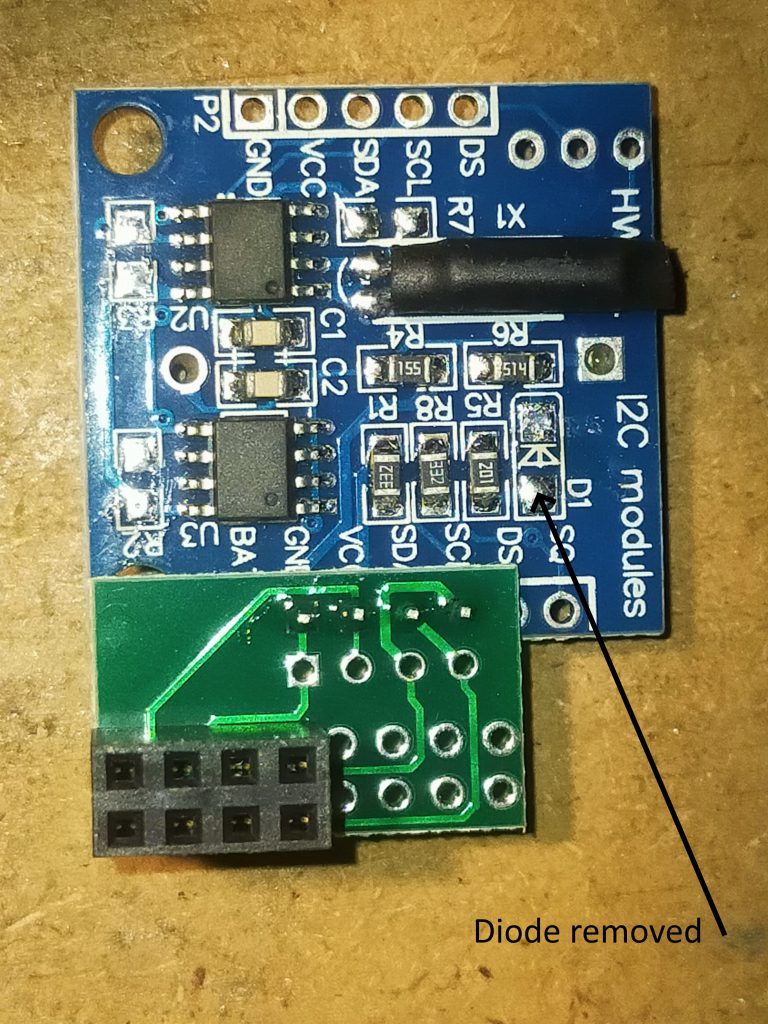

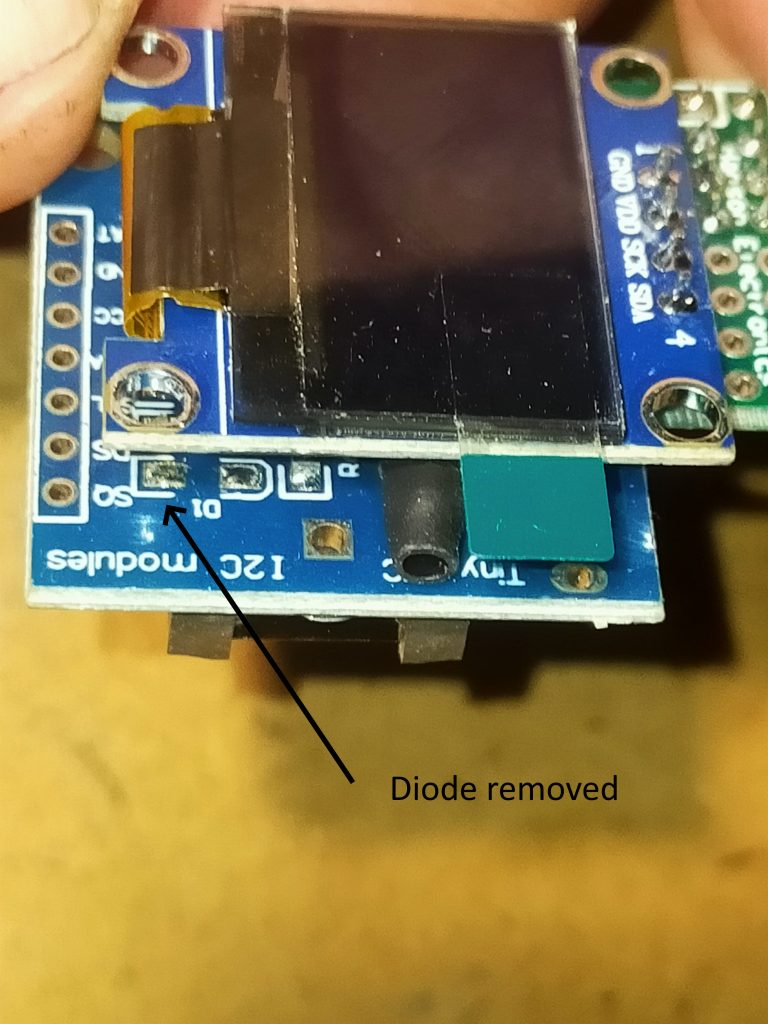
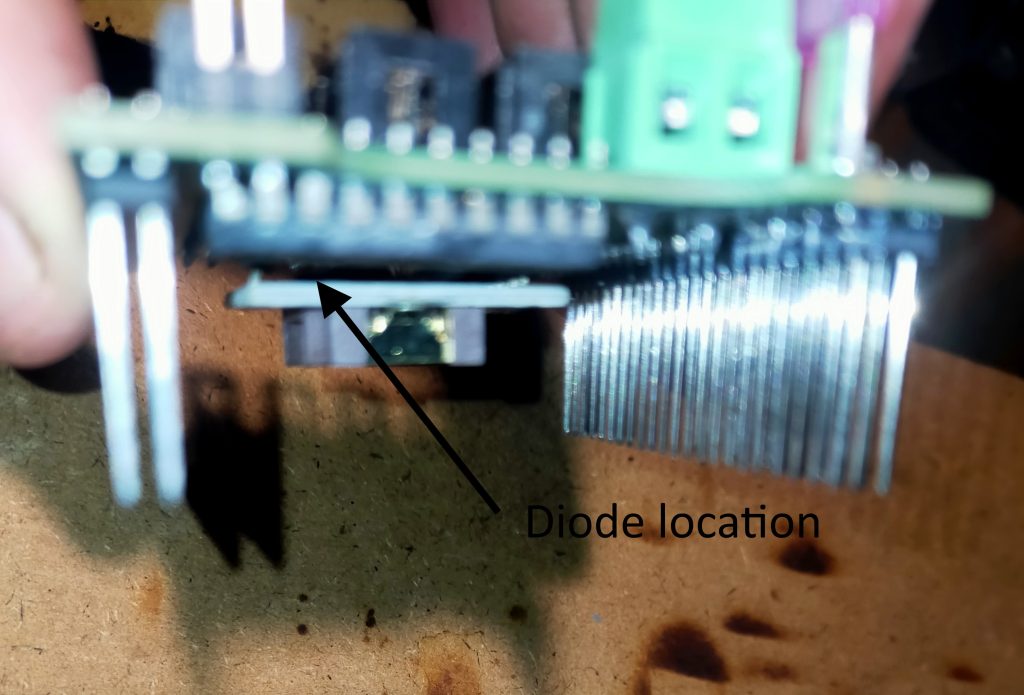
Failure to remove the diode
If I failed to remove the diode D1 then there is the possibility that if you are using the RTC and thus have a CR2032 battery installed, which isn’t rechargeable, then the battery could be damaged and further damage the board it is attached to and possibly the Pi or Beagle that that board is connected to.
How to check if the diode is in place
You can check to see if the diode is still in place by either visually checking as per the pictures above or by measuring the voltage across the battery terminals with the board powered but not connected to a Beagle or Pi. With no diode on the tinyrtc the voltage should be pretty much exactly 0V DC. With the diode in place the voltage will be somewhere around 4.7V DC.
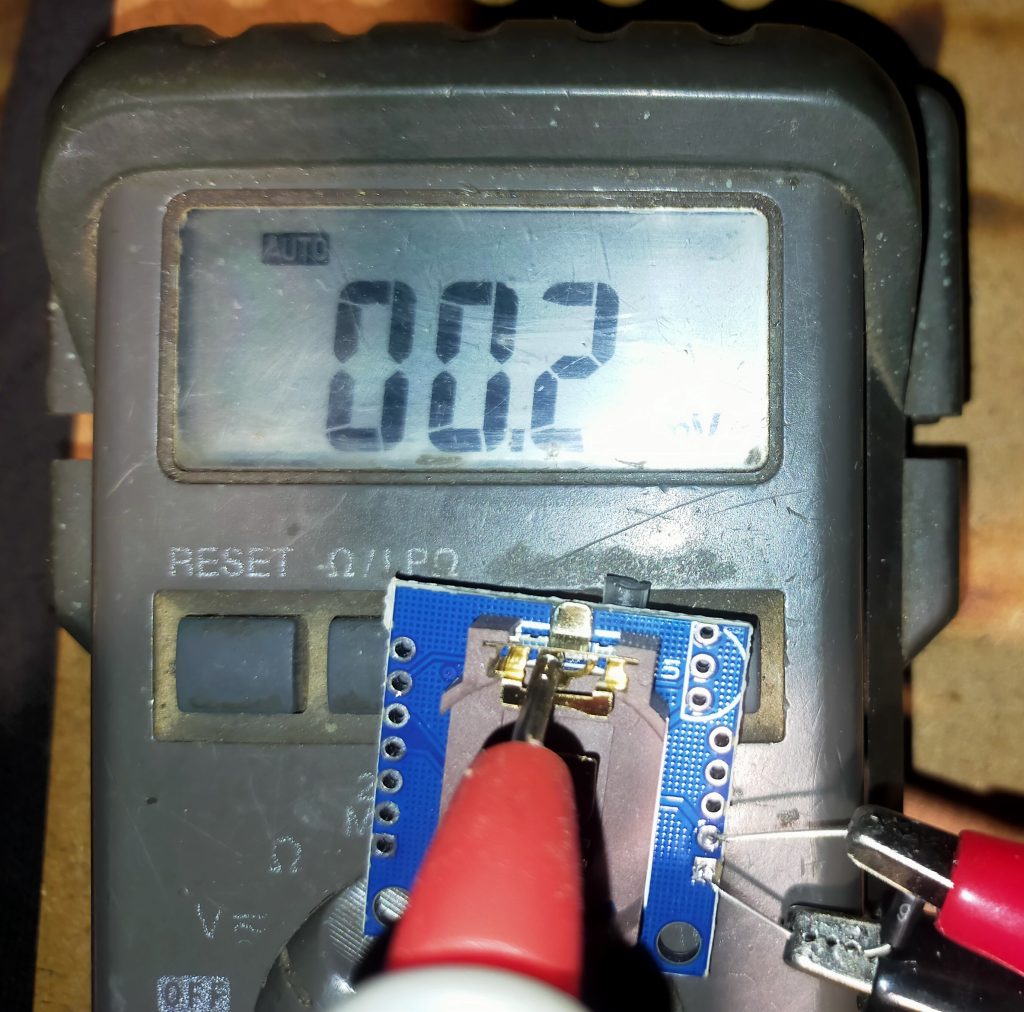
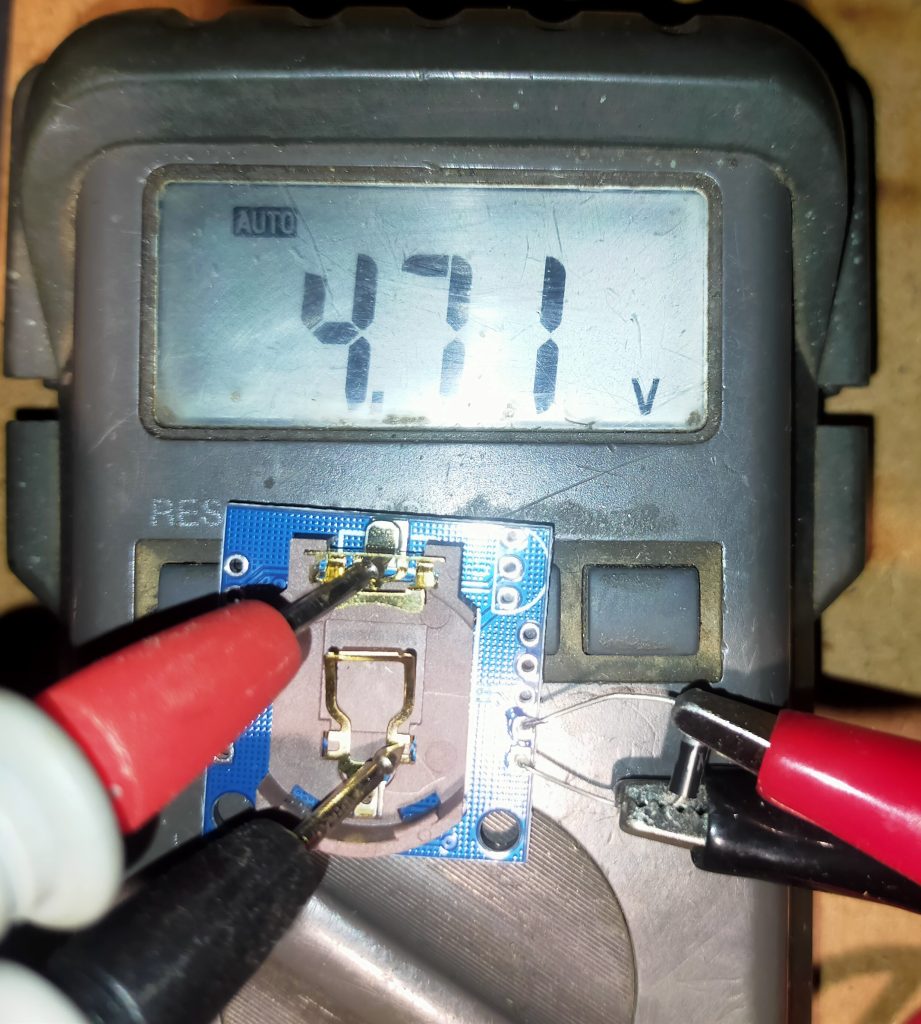
What to do if the diode is in place
If the diode is in place then there a couple of options.
- If you aren’t using the RTC function of the board then you can pretty much continue on as normal with no battery installed. I would actually prefer a sticker was placed on the battery clip to indicate that the battery used should be a LIR2032.
- If you are using the RTC then if you can get the board back to Hanson Electronics the diode will be removed from your board (or the board will be swapped out with a like for like)
- If you are using the RTC and it’s not convenient to get the board back to Hanson Electronics then a LIR2032 rechargeable battery can be used. Again I would prefer that a sticker or label was placed on the board to say to use a LIR2032.
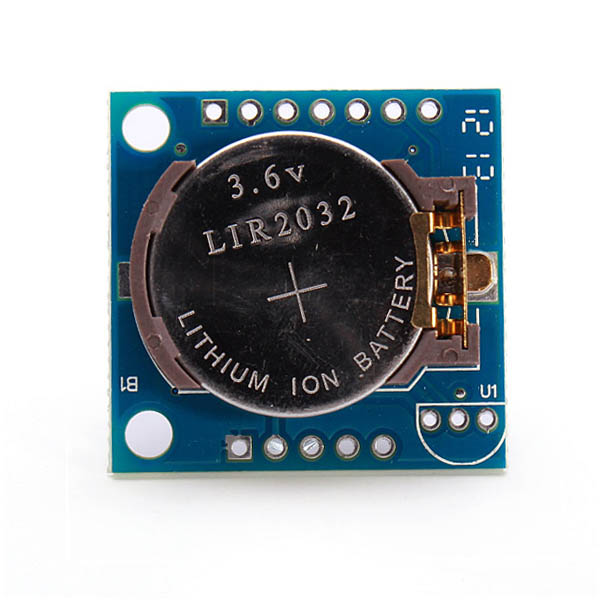
LIR2032 batteries
I will soon have stock of LIR2032 batteries and will make them available for a somewhat sensible price not the $15-16 each that some places charge for them. Ebay and potentially some other places have them available from $2 up.
Boards affected
The list of boards that contain the TinyRTC module and may be affected are
- Octoscrolla with RTC
- rPi-28D and rPi-28D+
- HE123, HE123Mk2 and HE123D
- rPi-Clk
- rPi-LedClk
The diodes are manually removed and all “should” be removed but I have no way of knowing if 0, 1 or 100 have been missed out of the 500+ boards that have gone out attached to my boards.
